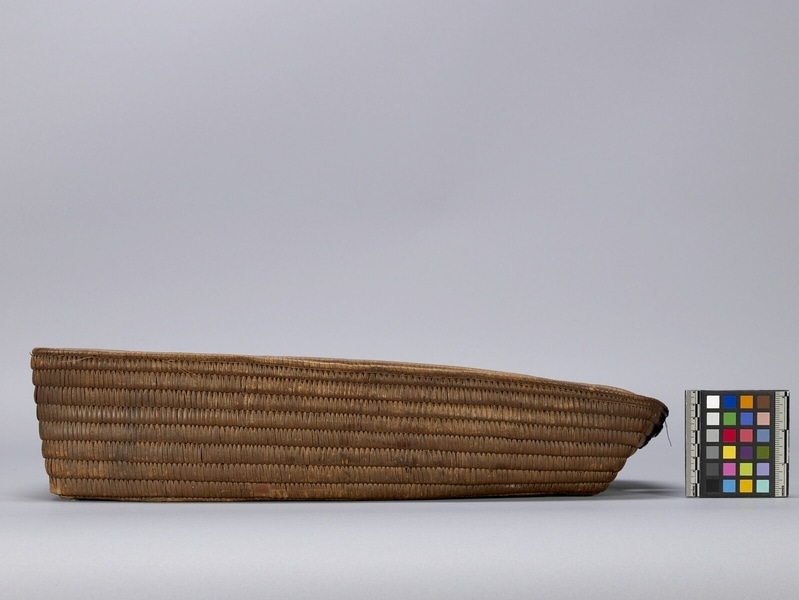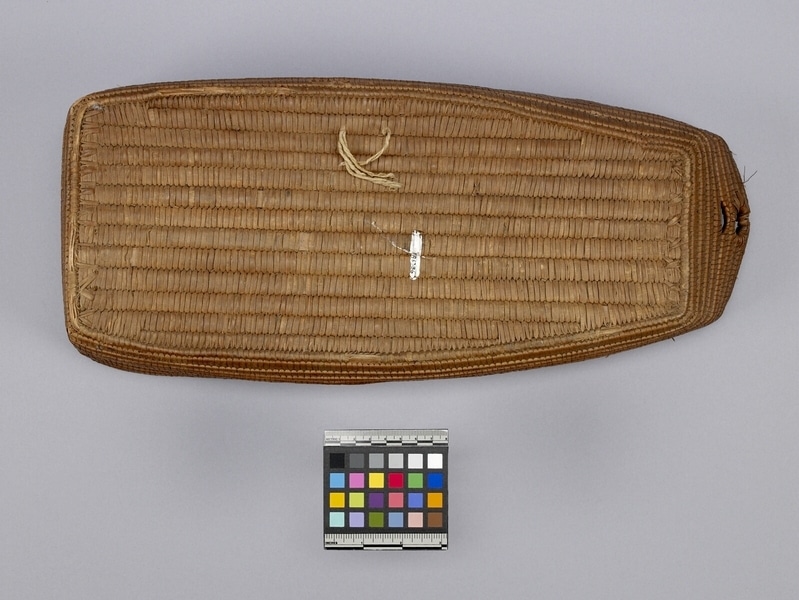Baby Carrier Item Number: A6386 from the MOA: University of British Columbia



Description
Undecorated oiled cedar root cradle. Wood slat foundation with simple interlocking coiled work (bifuracted stitches). Parallel slat base, overcast rim, and double openings at the bottom end.
History Of Use
Basketry cradles are thought to be of relatively recent origin by some basketry experts, such as Andrea Laforet of the Canadian Museum of Civilization. They may first have appeared in the late 1800s or early 1900s. In the early to mid 20th Century basket makers began expanding their reportoire of shapes and styles for collectors, and many new forms were seen including tea cups, tables, suitcases, and hand bags to name a few.
Cultural Context
basketry; children
Narrative
Nlaka'pamux Elder Minnie Peters notes that this cradle has openings through which urine can pass through. In the past, cradles like this one, would have been lined with pounded cedar bark to protect the babies by keeping them clean and dry. Northwest Coast ethnographer Marian Wesley Smith noted in her fieldnotes (c.1950s) that small containers were placed under the cradles to catch drippings when traveling or visiting with friends.
Item History
- Made in British Columbia, Canada during 1900
- Collected in Fraser River, British Columbia, Canada during 1900
- Owned by Mrs. G. H. Ashwell
- Owned by Mrs. W. M. Ivel before February 15, 1954
- Received from Mrs. W. M. Ivel (Donor) on February 15, 1954
What
- Name
- Baby Carrier
- Identification Number
- A6386
- Type of Item
- carrier
- Material
- cedar root and wood
- Overall
- height 12.0 cm, width 20.7 cm, depth 50.0 cm
Who
- Culture
- Coast Salish: Squamish
- Previous Owner
- Mrs. G. H. Ashwell and Mrs. W. M. Ivel
- Received from
- Mrs. W. M. Ivel (Donor)
Where
- Holding Institution
- MOA: University of British Columbia
- Made in
- British Columbia, Canada
- Collected in
- Fraser River, British Columbia, Canada
When
- Creation Date
- during 1900
- Collection Date
- during 1900
- Ownership Date
- before February 15, 1954
- Acquisition Date
- on February 15, 1954
Other
- Item Classes
- basketry
- Condition
- good
- Current Location
- Case 5
- Accession Number
- 2001/0001